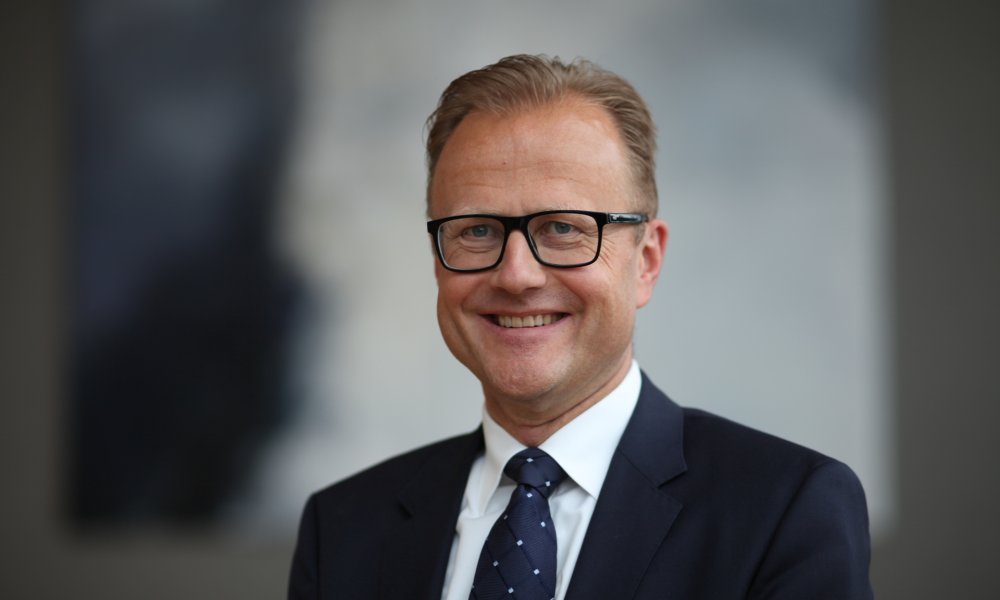Private equity has from time to time been dismissed as a complicated and inaccessible asset class which does more harm to society than good. This understanding has been shifting for a while now, with increasing democratization and mainstreaming of PE, as well as a steadily growing sustainability orientation. We turn to Dagfin Norum, our Chief Investment Officer, to debunk some common misconceptions about PE, understand what it can offer to clients, and look ahead for upcoming trends in PE for sustainability and beyond.
What are some common misconceptions about private equity you see out there and how do you respond to these?
One notable misconception is that private equity suffers much more from high interest rates compared to public equities. This is an understandable concern as we have been experiencing higher interest rates for a couple of years now. However, when compared with listed equities, the leverage applied is less apparent as a value driver than it was in the 1980s and 1990s.
Furthermore, when we employ a long-term perspective, we also see that private equity can outperform public equities in different economic situations, both in times of high as well as low inflation. According to recent research by NBIM, PE buyout funds have on average outperformed public markets by almost 4% [1]. In this respect I would like to highlight that our own experience with PE investing since the late 1990s shows an even higher outperformance.
Of course, we need some asterisks here: There is large variation in risk levels within PE, depending on the investment strategy of the manager and the risk profile of the underlying companies. There are also significant differences in performance across different PE managers. Selecting the right partner for PE-investments is crucial to achieve the results you are looking for.
What about the perception that PE cannot serve those clients with ambitious sustainability goals?
I would strongly disagree with such a general statement. Of course, the sustainability focus varies between different managers, just like it does in all asset classes. However, for managers taking sustainability into account, I would rather argue that PE is an excellent vehicle to make strong impact. PE managers normally have considerable ownership stakes and follow active management strategies with a focus on generating long-term value. The private markets also offer great opportunities to tap into early-growth and solution companies. We are also seeing an increase in PE involvement in impact strategies, which aim to bring about positive societal impact in addition to satisfactory financial returns.
I also think demand coming from sustainability-oriented clients will help continue to strengthen PE practices. As more institutional clients with ambitious sustainability goals turn to PE, the PE firms will need to further step up their game to accommodate the wishes of their clients. It is easy to see this: The number of private equity firms which are signatories to the Principles for Responsible Investment (PRI) is increasing steadily. More than two thirds of private equity capital raising come from managers with an ESG mandate [2].
This all sound great but what do you think about the infamous fee structure of PE?
The management fees are traditionally high, there is no beating around the bush there. However, one must keep in mind that with PE you get a truly active portfolio management. Sourcing and executing successful private market deals and thereafter leading operational improvements through active ownership is different from managing more passive listed portfolios. History has also shown that strong PE managers are able to generate excess return, which more than offsets the additional fee compared to listed strategies. In this regard, it is crucial for clients to find PE partners that have a strong track record of generating satisfactory returns within their stated investment strategy and are transparent about how they are doing it.
I also think of PE management fees as premiums paid to access investment opportunities that are otherwise difficult to find. This is true both within direct PE and in fund-of-fund structures. Of course, deal originating is crucial within direct PE to deliver on the return expectations. Within fund-of-fund structures managers devote significant time and effort into building relationships with individual PE fund managers over many years. Clients can then access these relationships without devoting the same level of effort. In one sense, the fee is not only paid for allocation but also for the research and good long-term relationships that go into the process and gives access to the potentially best managers across the globe.
As you mentioned, we are seeing an increase in the use of impact/sustainability strategies in private equity. What does this mean for clients and for the positive impact on our planet and society?
In essence, PE Impact funds invest in funds or companies that intentionally select assets which not only provide a financial return but – through their business activity – also provide a solution to a given environmental or social problem. Examples can be car-battery producers that enable the electrification of transport or digital health care providers which help to cover people who would otherwise have no access to medical services.
Clients get exposure to companies that pro-actively address environmental and/or social issues through their business. Clients receive a financial return and transparent reporting on impacts achieved.
Most PE Impact strategies come with stated objectives and pre-determined impact topics (such as emission avoidance, waste-reduction, affordable education, etc.), but can vary from strategy to strategy.
Is there any geographical variation in private equity impact/sustainability strategies, for instance between Europe and the US? If so, how would you evaluate these differences?
Naturally there can be different priorities, not necessarily by geography, but often by investor type. For example, foundations prioritize topics according to their statutes whereas insurance investors might overweight emission-related themes.
However, what we do notice, is that there can be differences in what terminology is being used. While European investors commonly embed their investment strategy in reference to the Paris Agreement, you might see impact investors in the US rather speak about more “secular” trends such as industrial transformation.
When it comes to strategies, generally we do see more investment opportunities in environmental themes than social topics, but that is of course due to the attention around climate and climate change, and I do think that other strategies will continue to evolve.
In 2023, Norges Bank Investment Management (NBIM) has opened discussions about whether its mandate should be extended to cover private equity assets. What do you think of this move? What would it mean if NBIM is indeed allowed to invest in private equity?
I do think that NBIM has a strong rationale behind their arguments for extending the investment mandate. They have been articulate around the return potential and diversification benefits. After all, PE gives investors access to a wider universe of investment opportunities and should therefore offer opportunities for improving the risk adjusted return on the total portfolio. It is also a fact that PE delivers attractive returns, provided that you are able to find the right partners that suit your investment strategy. In general, I would support this move by NBIM given both the increased return potential and the diversification benefits. In this respect it is also worth noting that the size of private markets has increased rather strongly over the years. Within equities, PE has grown from a share of 4% of the public equity market in 2010 to 9% in 2022 [1]. This is a trend I expect to continue.
Even if NBIM is mandated to pursue opportunities in PE, there is still some questions that remain to be answered. A meaningful allocation should in my view be around 5%, which means that the fund will be a very big investor in this space. This raises the question of whether it is possible to deploy that amount of capital to attractive investment opportunities within a reasonable time period.
The fact that costs associated with PE are relatively high could impact the public’s respect and trust which is crucial. It is important that the fund can convince the public that the total fee load for fund investments and co-investments are acceptable.
Another important aspect is of course the organizational set-up for investing in the asset class. After all, there is a difference between investing in listed markets with rather limited deviation to the reference portfolio and investing in private markets with limited liquidity. How this is organized, and the amount of resources applied, is important to clarify. Given the indisputable success with the fund, we should be very careful with altering the fund’s investment strategy too much, given the strong support it has in the public in Norway.
All in all, if these questions are answered in a convincing manner, I would personally support an extension of the mandate.
What trends do you foresee in 2024 for private equity? Especially in terms of sustainability and impact?
If you speak to institutional investors today a common theme is the overallocation to PE after 2022, when both fixed income and public equities dropped significantly, while PE held up better. Combined with a rather slow transaction market in 2023 due, at least partly, to the sharp increase in interest rates this situation has been prolonged. We now see signs of interest rates levelling out, and I expect transaction volumes to pick up in 2024, and with that also distributions to investors. With this in mind, I expect 2024 to offer some very interesting investment opportunities, which is usually the case when you come out of a “slow” period when markets rebalance. Furthermore, I do think we will see a continued trend where institutional investors will access private markets in general.
Another trend that is picking up speed is the efforts to make PE available for a broader audience of private investors. Historically PE has been reserved for institutional and professional investors, and we have seen a strong drive from the industry towards finding solutions to offer PE to private individuals. I expect this trend to strengthen in 2024 and beyond.
When it comes to sustainability, there is a tremendous amount of capital needed to reach the ambitions inherent in the Paris agreement. This will require both public support and capital, but not the least vast amounts of private investments. Combined with an increased sense of urgency among people in general and the required and expected political support for these kinds of investments, I do think that sound investment ideas that can contribute to the solutions we all need will generate both excellent returns and impact.
All considered, if you were to sum up private equity in one sentence, what would you say?
Investing in private equity is an excellent way of improving your portfolio’s risk adjusted return and making an impact – given that you can identify and access the best PE managers.
References
[1] Discussion Note on Private equity | Norges Bank Investment Management (nbim.no)
[2] McKinsey Global Private Markets Review, March 2023.







